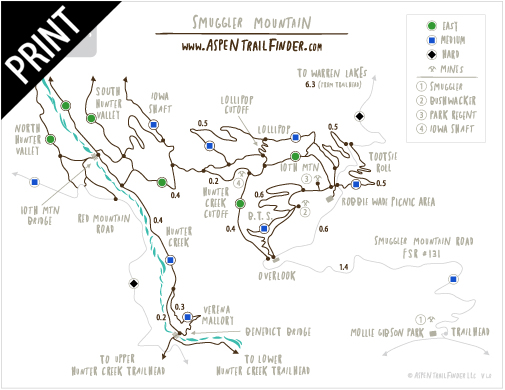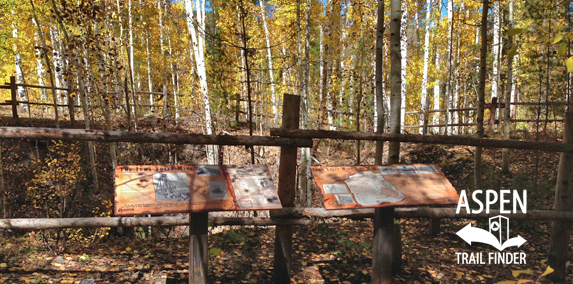Connects: Smuggler Mountain, Hunter Creek Cutoff Trail, 10th Mountain Trail
Aspen, CO – Mine
The Iowa Shaft Mine is an abandoned mine site on Smuggler Mountain. This is a site in Aspen, CO.
During the lat 1880s silver boom, prospectors following the Aspen Vein laid out claims on Smuggler Mountain, including the Iowa. The Iowa Shaft Mine was a late bloomer that proved successful when development of its workings, advanced equipment, and access through the Cowenhoven Tunnel provided the efficiency necessary to yield steady profits.
In 1887 B. Clark Wheeler began sinking the shaft of the Iowa claim after purchasing it along with the Joplin and Cascade from the original claimants. The Iowa’s first surface plant consisted of a horse whim hoist, blacksmith shop, and pump. A steam hoist soon replaced the horsepowered unit, permitting work at greater depths.
The need for capital kept pace with the struggle against persistent ground water, limitations of equipment, and high operating costs. To meet these challenges, Wheeler first sold an interest to the Aspen Consolidated Mining Company. Then he leased both the mine proper as well as a right-of-way through the shaft to adjoining properties with better silver ore. These measures produced needed capital and permitted expansion of the shaft, drifts, crosscuts, and connecting raises.
The Iowa’s unspectacular production took a turn for the better when the Cowenhoven Tunnel opened up access below the vein in 1891. Finally with rich silver ore found, drainage problems solved, and operating costs cut, Wheeler and his investors netted respectable wealth.
Following the 1893 Silver Crash, most Smuggler Mountain mines continued work only through the Cowenhoven Tunnel, but the Iowa’s shaft remained in service until the 1899 fire. Production in the Iowa gradually tapered, ceasing in the early 1900s. What you see today is faint archaeological evidence of the massive operation that once took place on this site.”


























